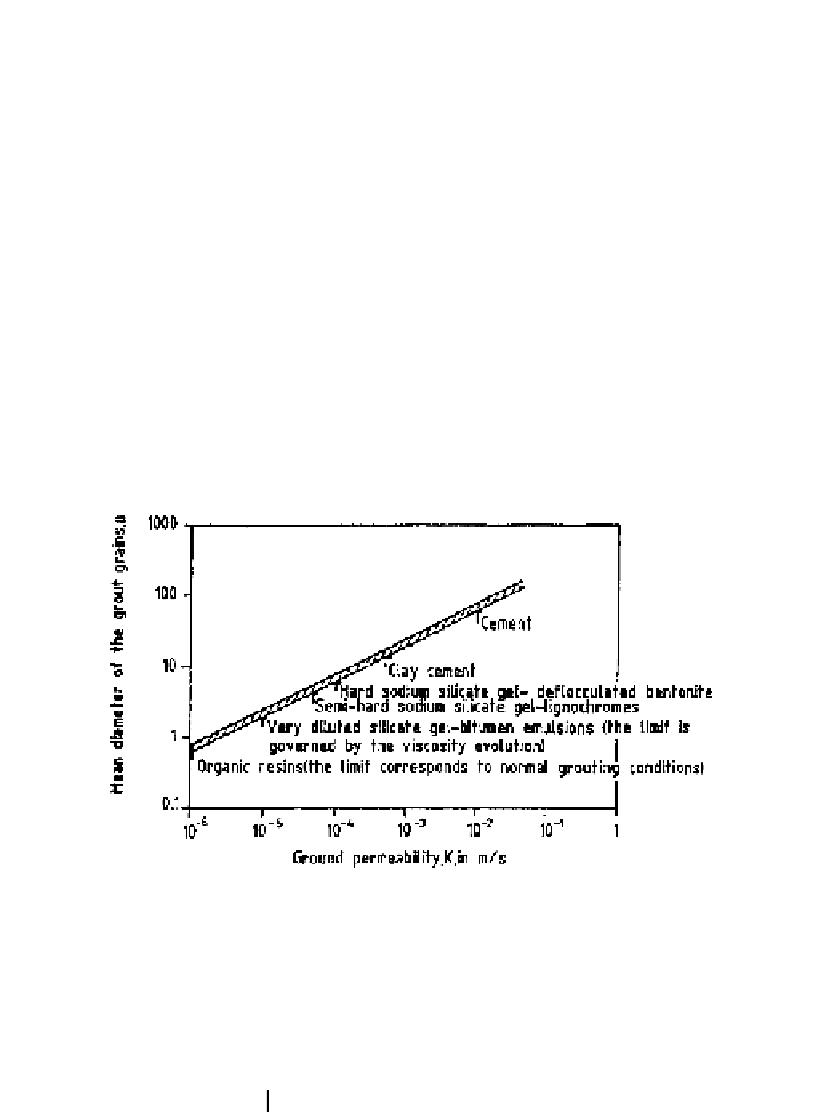Environmental Engineering Reference
In-Depth Information
Table 18.7.
Grouting limits of common mixes (Littlejohn, 1985).
Silty or clayey
Type of soils
Coarse sands and gravels
Medium to fine sands
sands, silts
Soil characteristics
Grain diameter
D
10
0.5 mm
0.02
D
10
0.5 mm
D
10
0.02 mm
100 cm
1
100 cm
1
1000 cm
1
1000 cm
1
Specific surface
S
S
S
10
3
m/s
10
3
10
5
m/s
10
5
m/s
Permeability
K
K
K
Type of mix
Bingham suspensions
Colloid solutions (gels)
Pure solutions
(resins)
10
2
m/s)
Consolidation
Cement (K
Hard silica gels double shot
Aminoplastic,
10
4
m/s) Single
grouting
aerated mix
Joosten (for K
phenoplastic
shot: Carongel, Givanol, Siroc
Impermeability
Aerated mix, bentonite gel,
Bentonite gel, lignochromate,
grouting
clay gel, clay/cement
light Carongel, soft silicagel,
vulcanisable oils, others
(Terranier)
Figure 18.26.
Limits of injectability of grouts based on the permeability of sands and gravels
(Littlejohn, 1985).
where Q
flow rate at radius of penetration R and the time for grout to penetrate.
nr
kH
2
R
r
3
3
1
R
r
2
2
t
1
1
(18.7)
3
2
i.e. time is proportional to R
3
. This dictates that relatively close hole spacings are used for
economic grout times, e.g. 0.5 m to 2.5 m.
There are different tables and graphs indicating the types of soils and soil permeability that
can economically be grouted, e.g. Littlejohn (1985) suggests Table 18.7 and Figure 18.26.
Karol (1985) suggests that, based on a review of the literature,
Figure 18.27
is a con-
servative assessment of groutability by permeation, i.e. without fracturing.







